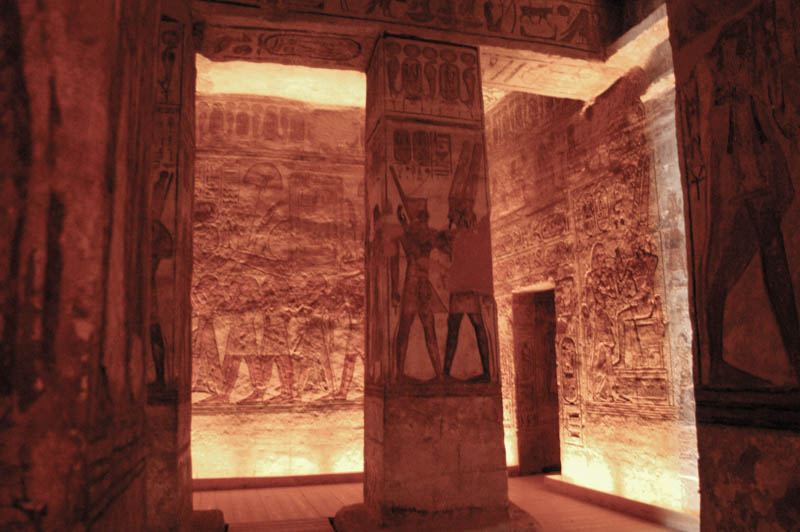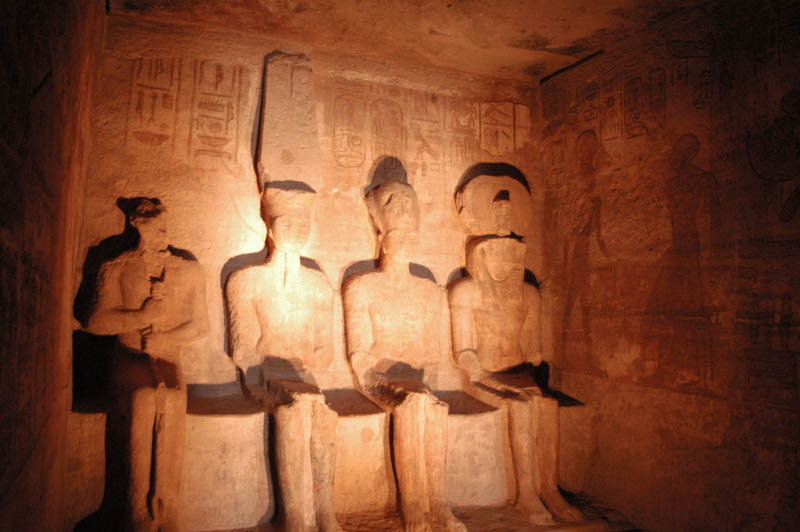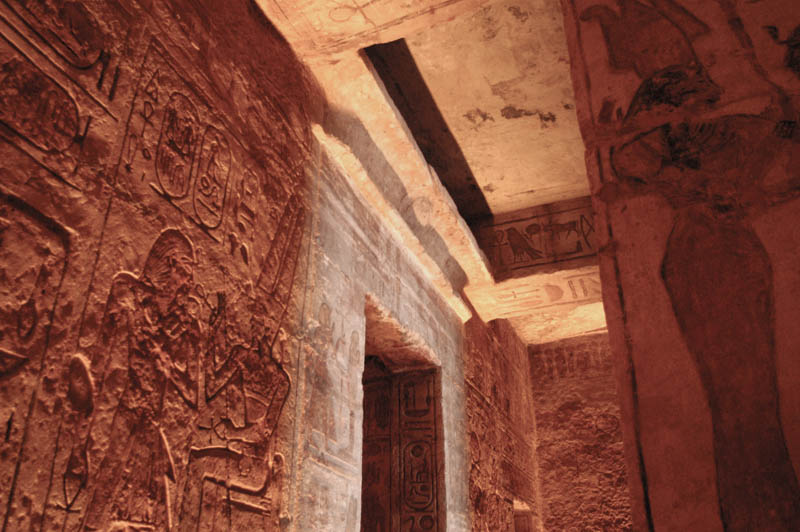
A smaller pillared hall further in seems bare compared to the hypostyle hall with its huge statues, but the carvings here show Ramesses and his wife, Nefertari, making offerings ot the gods. Two sphinxes (now in the Museum) guarded the entrance to this smaller hall.
Furthest in is the sanctuary, where four statues are seated behing a block that would have held the sacred barque. The statues, Amun-re, Re-Herakhte, Ptah, and Ramses (as a god) would have originally been covered in gold, but they are now mutilated.

The entire temple was designed to lead to the sanctuary, and so that the rays of the sun at dawn would illuminate the gold statues (except Ptah, for reasons that are unknown) on two days a year — Feb 22 and Oct 22 in their current location, which has shifted the phenomenon a day.
Your guide, if you have one — and most guidebooks — will probably tell you that Feb 21 was Ramesses’ birthday, and that Oct 21 was his coronation date, but there is no real evidence that either of these dates are linked to either a birthday or a coronation day. Egyptologists have enough trouble trying to reach a concensus on the dates of Ramesses reign, much less the date of his birthday or other significant days.

Despite the controversy over the dates, we missed seeing the illumination of the statues by the morning light by only a few days. I realized that when we were planning we might be able to make it to Abu Simbel on the 22nd, but the schedule simply didn’t work out that way. I’m sure the site is crammed full of people on those days, all so eager to see the beam of light reaching into the depths of the temple that is probably is completely blocked by the mass of people